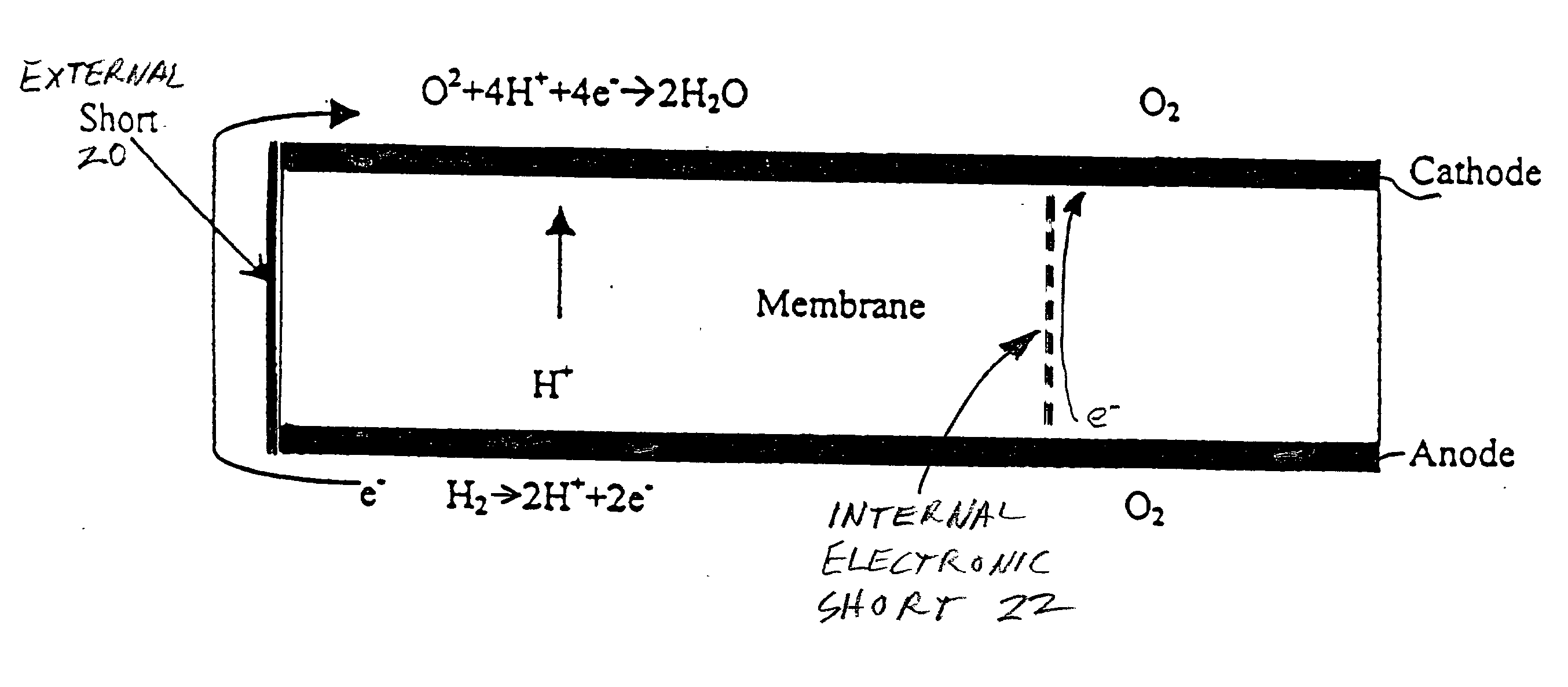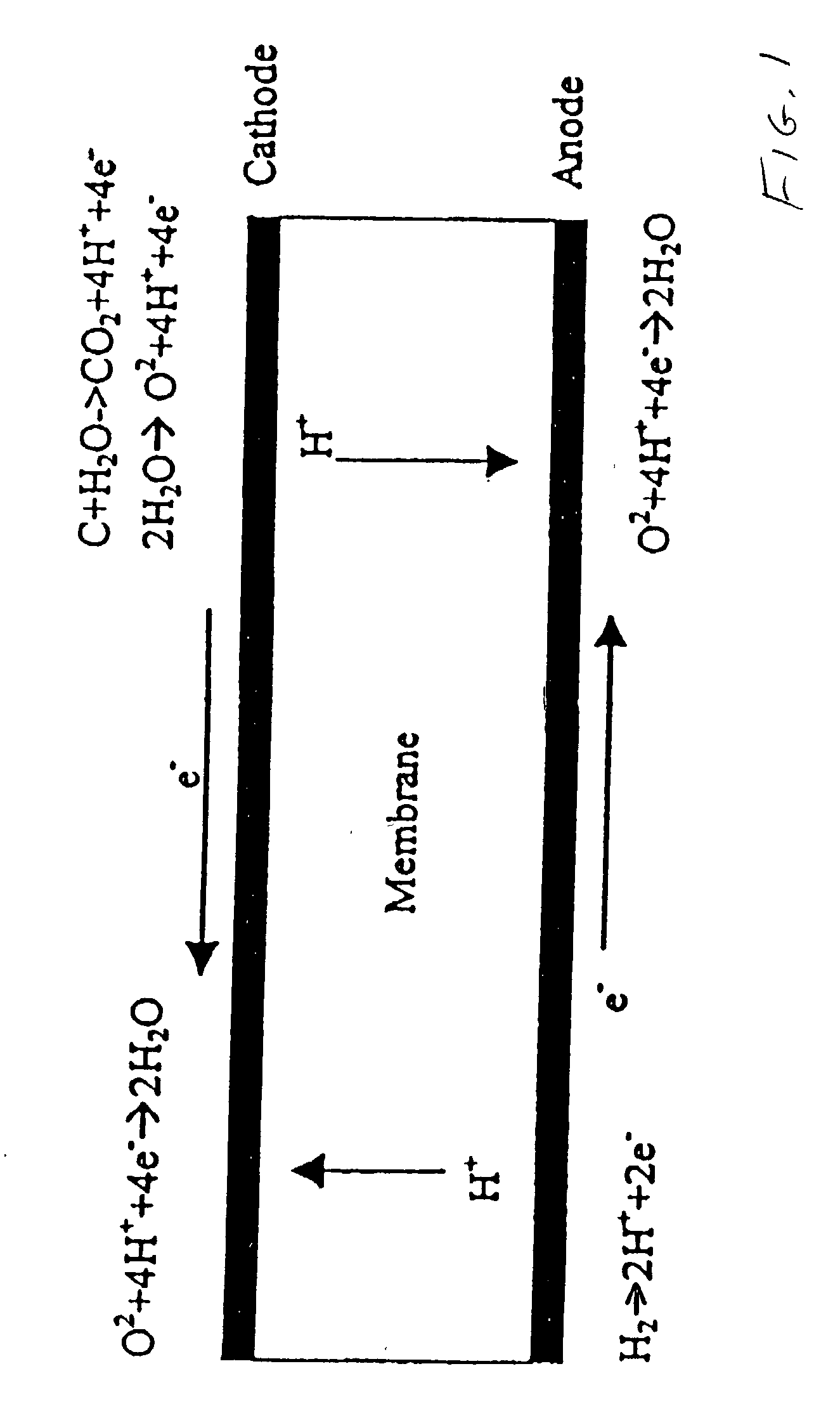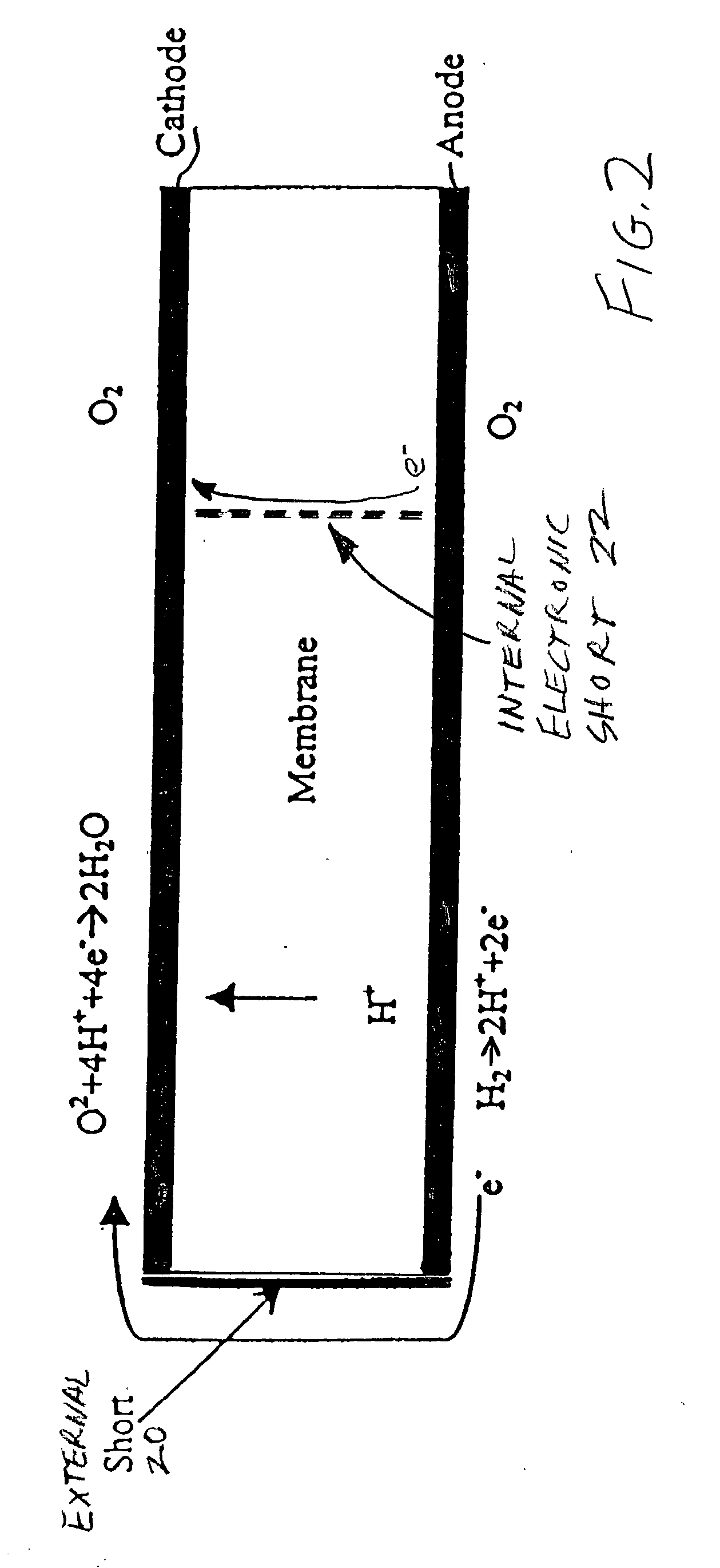Reducing fuel cell cathode potential during startup and shutdown
a fuel cell and cathode technology, applied in the field of reducing the cathode potential of the fuel cell during startup and shutdown, can solve the problems of catastrophic performance loss, decreased cell performance, permanent decay of the fuel cell performance, etc., and achieve the effect of reducing catalyst and support corrosion, reducing the potential to which the cathode of the pem fuel cell stack can rise, and reducing the potential to which the cathode can ris
- Summary
- Abstract
- Description
- Claims
- Application Information
AI Technical Summary
Benefits of technology
Problems solved by technology
Method used
Image
Examples
Embodiment Construction
[0022] The phenomenon which is believed to occur in PEM fuel cells as a result of there being fuel in some areas of the anode flow field, but not all areas thereof, is illustrated in FIG. 1. As is known, hydrogen ions (H.sup.+) migrate from the anode to the cathode as a result of the catalytic action on the anode, as is illustrated in the left side of FIG. 1. However, in areas of the fuel cell, represented at the right end of FIG. 1, where there is no hydrogen in the anode flow fields, the hydrogen ions migrate from the cathode, through the membrane, to the anode (sometimes called the reverse current). During this condition, the potential of the carbonaceous cathode support relative to the standard hydrogen electrode can exceed 1.4 volts, which is more than sufficient to cause corrosion of the cathode catalyst support as well as of the noble metals in the cathode catalysts. Even though the period of time during which this condition exists is very short each time that a fuel cell is ...
PUM
| Property | Measurement | Unit |
|---|---|---|
| time | aaaaa | aaaaa |
| voltage | aaaaa | aaaaa |
| electrical power | aaaaa | aaaaa |
Abstract
Description
Claims
Application Information
 Login to View More
Login to View More - R&D
- Intellectual Property
- Life Sciences
- Materials
- Tech Scout
- Unparalleled Data Quality
- Higher Quality Content
- 60% Fewer Hallucinations
Browse by: Latest US Patents, China's latest patents, Technical Efficacy Thesaurus, Application Domain, Technology Topic, Popular Technical Reports.
© 2025 PatSnap. All rights reserved.Legal|Privacy policy|Modern Slavery Act Transparency Statement|Sitemap|About US| Contact US: help@patsnap.com



